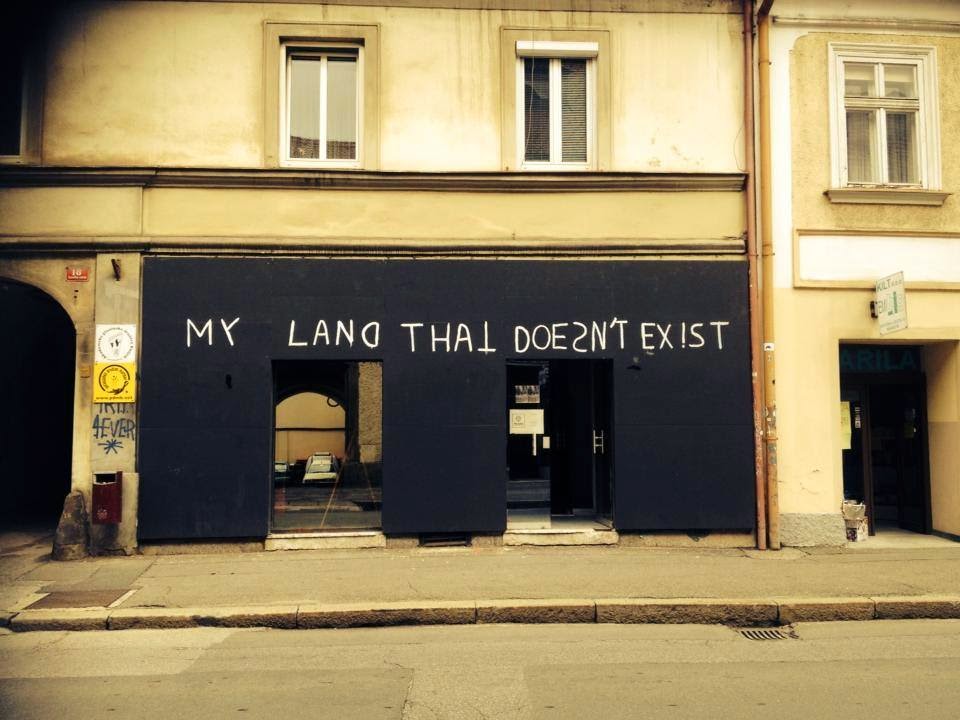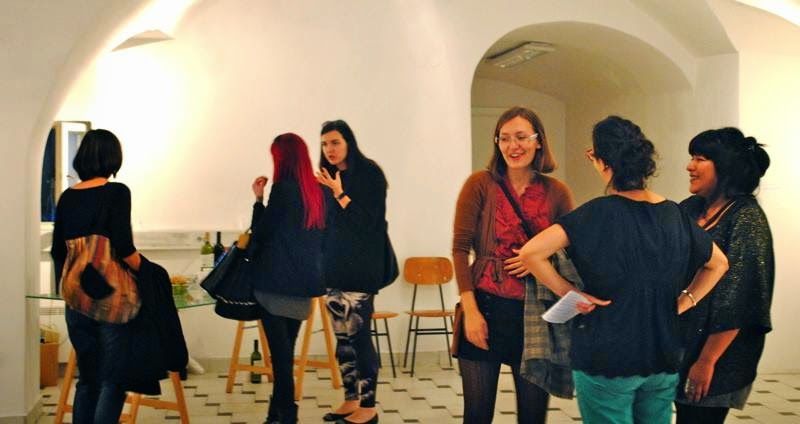Nous avons voulu créer un concept, d'un voyage culturel et artistique. Savoir ce qui est vrai du faux, est-ce que ce qui est présenté peut faire partie de la vérité ou non, est-ce que l'on a affaire à des images d'archives représentant un vrai périple ou bien est-ce juste une idée, un concept qui apparait en une exposition culturelle, telle qu'un docu-fiction? Montrer comment un étranger tente de rentrer et de s'approprier une nouvelle terre, de nouvelles coutumes et faire partie petit à petit du groupe.
Cette exposition amène le spectateur à se questionner sur la notion de voyage et d'exotisme via tous les rites et coutumes du pays "d'accueil". Tel est le sujet de l’exposition « My land that doesn’t exist ».
Cette idée d’exposition, est en fait en lien avec les expositions ethnographiques que l’on a pu voir tout au long de l’histoire de l’art, rapportant les mœurs, les coutumes et le fonctionnement de la vie d’une population donnée.
Ici, on a voulu rajouter un apport contemporain via des photos et vidéos travaillées techniquement et esthétiquement car les expositions ethnographiques sont présentent pour apporter un contenu en lien avec la population : rapporter des objets du pays ou de la communauté, montrer les rites, mais ici sous un angle esthétique contemporain, ne pas simplement montrer pour montrer, comme des phénomènes de foires ou des choses étranges, mais apporter un concept plus fort et plus artistique.
Cependant, l’exposition a voulu rejouer cette idée de terrain, qu’ont en commun les expositions ethnographique où l’on part dans des pays pour rapporter des objets, des idées, des vécus, que l’on présentera alors au musée et à la population occidentale. Ici le but était de jouer sur cette idée de l’appropriation de la terre, montrer le minimum au public tout en lui faisant comprendre que les artistes sont bien allés dans cette terre inconnue pour en ramener une plante, une pierre et des preuves photographique et vidéographiques de manière à intégrer la population, par des rites, des coutumes. Mais, le but a aussi été de jouer avec le faux et le vrai. Sommes-nous face à un simulacre ou sommes-nous dans l’entière vérité ? Face à cette question, le visiteur se devait de créer sa propre opinion.
Cette idée de réel et d’irréel est très présente dans l’art et notamment la photographie. En effet, ce médium qui a été inventé et utilisé au début du XIXème siècle, a été en 1er lieu un moyen d’enregistrer le réel. Mais petit à petit grâce à une technique particulière, une mise en scène, la photo apporte un flou et peut facilement transfigurer le réel. La photo peut alors devenir simulacre du réel, c’est-à-dire que l’on peut fabriquer et truquer le réel et ainsi faire croire à la vérité. C’est ainsi que l’exposition a souhaité d’une certaine manière traitée de ce sujet.
“My land that doesn’t exist”, est-elle le reflet d’un voyage initiatique réalisé par des artistes à la rencontre d’une population et de ses coutumes, ou bien est-ce un simulacre ?
Voilà, une des questions principales de cette exposition...
Façade de l'exposition
------------------------------------------------------------------- eng ----------------------------------------------------------
We wanted to create a concept of a cultural and artistic trip. We wanted to know what is true or false, if the presented material can be part of the truth or not? Are we dealing with archival footage representing a real trip or is it just an idea, a concept which appears in a cultural exhibition such as a docufiction? It shows how a foreigner tries to enter and integrate themselves to a new land, new customs and step by step become part of the group. This exhibition evokes within the spectator thoughts of wonder about the notion of travel and exotic via all rites and customs of the hosting country. That is the main subject of the exhibition.
The exhibition is actually a reference to ethnographic exhibitions, which have been popular throughout the History of Art, bringing back habits, customs and the life of a certain population.
Here however we wanted to add a contemporary medium, such as photography and video, because ethnographic exhibitions are presented to provide content in relation to the population: they report objects from a certain country or community, show the rites but with a contemporary aesthetic perspective. They’re not represented as fair phenomena or objects of curiosity, but have a stronger and artistic concept.
However, we wanted to replay the idea of going to a foreign country and bringing back objects, ideas and experience, which would later build up to an ethnographic exhibition. Our goal was to integrate ourselves with the population. Once we’ve achieved that, we could show and present all these objects and ideas at the museum and to the occidental population. ”My land that doesn’t exist” aims to play on this idea of integration, to show to the public that the artists have really been to this unknown land. They brought back a plant, a stone and photographic and videographic evidence, which were the medium of integration through rites and customs. Furthermore, the aim was to play with the false and the truth. Are we in front of a simulacrum or are we seeing the whole truth? While wondering, the visitor should be able to create his own opinion.
This idea of real and surreal is very present in art and particularly in the photography. In fact, this media, which was invented and used from the beginning of the 19th century, was firstly used as a way to record the reality. But little by little, thanks to particular techniques and direction, the photography becomes blurry and can easily transform this reality. Therefore, the photography can become a simulacrum of the reality, which means that we can transform it and still pretend to show the truth.
Is "My land that doesn't exist" the reflection of an initiation trip performed by artists, who wanted to meet a population and their customs, or is it just a simulacrum?
This is one of the main questions of this exhibition…
Clem
During the opening



